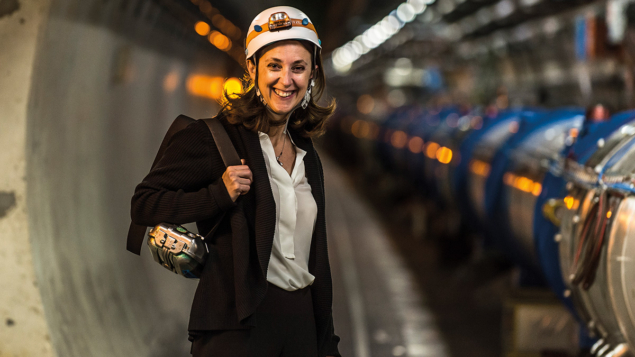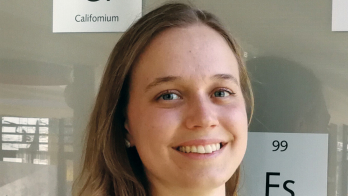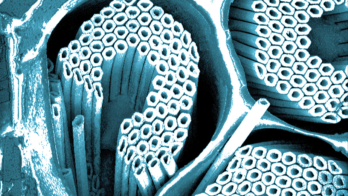Katy Foraz, head of CERN’s engineering department, fosters a culture of cross-disciplinary collaboration and continuous improvement within a team of nearly 450 personnel. Joe McEntee hears how the prioritisation of individual and collective development is fundamental to long-term success.

What does your working day look like?
There’s no typical working day – though there are typical working periods that shape my schedule. These could be programmed stops of the accelerator complex versus regular operations; launching new projects or commissioning new systems; issuing calls for equipment tenders; or following up with our industry contractors. The common threads in each case include clear objective setting, cascaded communication, high-level problem-solving and effective decision-making – all aligned within a well-defined strategy to ensure the long-term success of the engineering department.
How do you measure success?
Operationally, the engineering management team is trying to maximise workflow and process efficiencies, ensure the successful execution of projects and drive continuous improvement across many different areas – infrastructure management, documentation, safety systems and programme coordination, among others. Innovation is another priority to maintain our position at the forefront of engineering practice, working with industry partners across Europe and further afield as well as our colleagues from other departments at CERN.
What characteristics do you prioritise – individually and collectively – within the engineering department?
CERN is all about cross-disciplinary collaboration and relentless innovation – and especially so for the engineering department, which has a broad remit to support the accelerators, experimental programmes as well as tertiary infrastructure systems (such as cooling, ventilation, transport, handling, electricity, access and alarms). Put simply, the collision of ideas and perspectives from different disciplines leads to breakthrough thinking and innovative solutions.
A case in point: the integration of mechanical design, mechanical engineering and materials science within the department promotes knowledge transfer and a more holistic approach to problem-solving. Our experts in materials science, for example, work closely with the team responsible for CERN’s superconducting magnets – supporting consolidation activity and projects such as the HL-LHC and FCC. It’s a win-win in every case. That same openness underpins ongoing R&D partnerships with laboratories like the ITER nuclear fusion facility in southern France and Italy’s National Institute for Nuclear Physics (INFN), with whom we are performing design studies for medical applications and muon colliders.
Presumably the HL-LHC work programme is top of your agenda for the foreseeable future?
That’s correct. Implementing the necessary infrastructure upgrades for the HL-LHC and the twin experimental programmes is a significant undertaking. This includes planning, designing and executing construction projects to support the future demands of the facility. Managing these projects effectively over the next two years will help to alleviate the workload during Long Shutdown 3 and ensure a seamless transition to research operations again in 2029.
Within the context of the HL-LHC – also more broadly – how does CERN optimise its engagement with industry suppliers?
Building a mutual value proposition is the key to establishing strong and long-term relationships with industry. The engineering department aims to lead by example in this regard and demonstrate how collaboration with our equipment suppliers underpins shared success – increased market exposure, access to cutting-edge R&D, and opportunities for joint technology and process innovation. Consider our ambitious partnership with ABB Motion, a technology leader in digitally enabled motor and drive solutions to support a low-carbon future.
CERN’s engineering department provides the competencies, infrastructure systems and technical coordination required for the design, installation, operation, maintenance and dismantling phases of the CERN accelerator complex and its experimental facilities. Core activities include: • Operation, maintenance and consolidation of infrastructure systems for cooling, ventilation, transport, handling, electricity, access and alarms. • Design and installation of infrastructure systems for new facilities. • Mechanical engineering and materials expertise for the design, prototyping, manufacture and assembly of accelerator and detector components/subsystems. • Coordination for the technical stops and shutdowns in the accelerators and experiments as well as support for day-to-day operations.
A mandate for engineering excellence
Specifically, we are working together to optimise the laboratory’s cooling and ventilation infrastructure, with the aim of reducing energy consumption across the campus. In this way, CERN’s cooling and ventilation system is being equipped with smart sensors, which convert traditional motors, pumps, mounted bearings and gearing into an intelligent network of wirelessly connected devices. These devices will collect data to develop “digital twins” of selected cooling and ventilation units, allowing for the creation of energy-saving scenarios. Longer term, the plan is to disseminate the project outcomes publicly, so that industry and large-scale research facilities can apply the lessons we learn on energy-efficiency.
What are the main challenges facing the engineering department on an operational level?
The core systems for CERN’s accelerator and experiment complex are our number-one priority on a day-to-day basis. In short, that means proactive monitoring, maintenance and troubleshooting to minimise downtime and ensure smooth operations. Equally, the engineering management team also needs to be proactive in addressing challenges related to ageing equipment – planning ahead for system upgrades or replacement to avoid disruption to CERN’s research programme.
That forward-looking mindset comes with a sustained focus on technology and workflow innovation, integrating new tools, software and methodologies into our engineering processes to boost productivity, efficiency and safety. Underpinning it all, we work incredibly hard to scale the talent pipeline, attracting and retaining the brightest and best engineering talent – from junior technicians right through to senior management – and ensuring that all staff have opportunities for professional development.
On that last point: why should early-career scientists and engineers consider CERN as their preferred career pathway?
Big science endeavours like CERN have a lot to offer the early-career professional in terms of impactful and fulfilling work at the frontier of science and technology. Collaborating within multidisciplinary teams, for example, requires creative problem-solving, critical thinking and a willingness to embrace new ideas and learning – all of which are enhanced by working alongside experienced scientists, engineers and technicians from diverse disciplines. Ultimately, collaborations established at large-scale facilities like CERN can open doors to new opportunities in academia, industry and government agencies, providing adaptable and ambitious engineers with a solid platform for future career development.
With hindsight, what do you know today that you wish you had known when you started out in your career?
One of the biggest lessons I’ve learned along the way is to embrace new opportunities with confidence. I switched relatively early in my career from technical roles into engineering management – though for some time I was not at ease with the transition, wondering if it was the right choice. Nowadays, I can see that the move outside my comfort zone – far away from all those beautiful mathematical formulae – opened up new perspectives, new ways of working and helped me to build resilience. Over time, this all translated into greater versatility, so I became more confident and capable at navigating unfamiliar situations. The key take-away: trust in your abilities and remember that every role on the career journey offers valuable learning experiences and insights.








